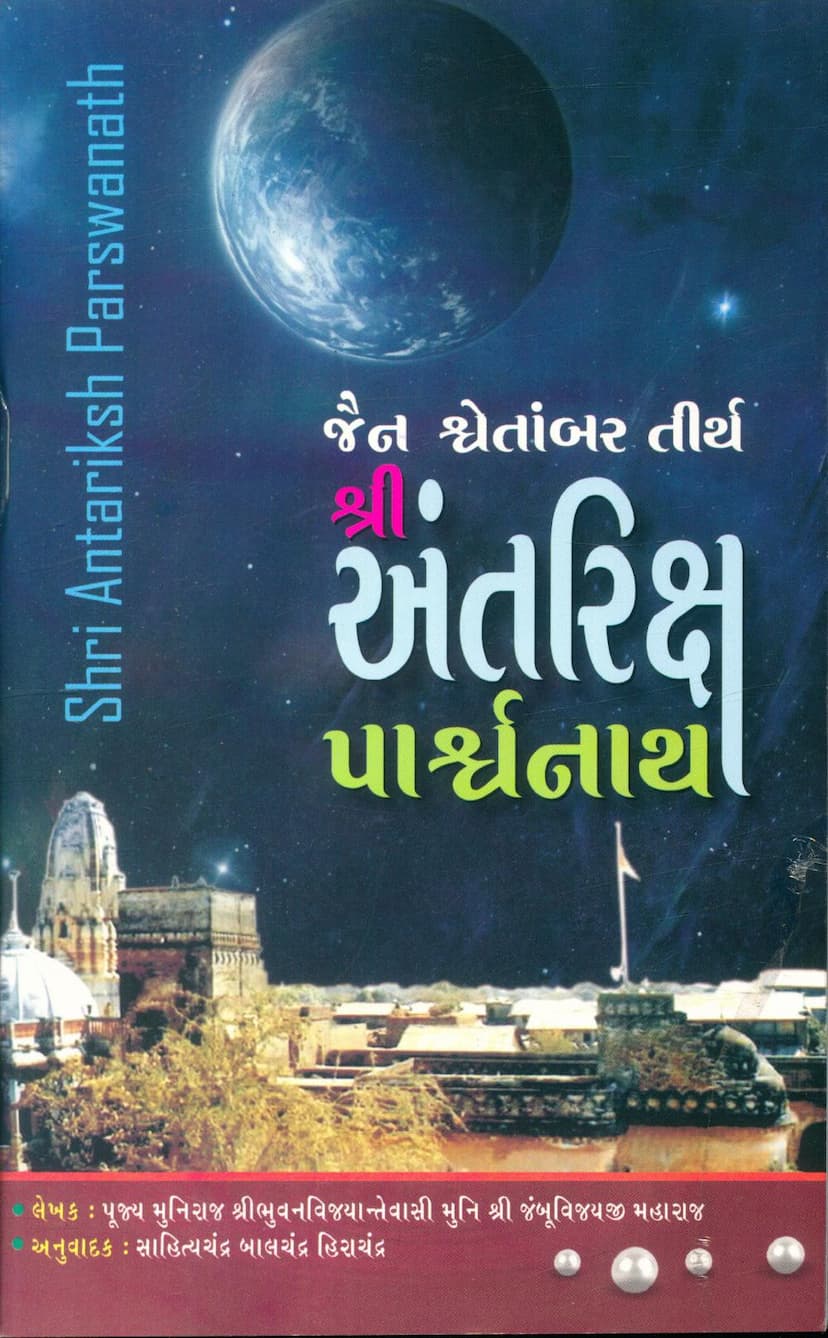Jain Shwetambar Tirth Antariksha Parshwanath
Added to library: September 2, 2025

Summary
The book "Shri Antariksha Parswanath Tirth" by Muni Shri Jambuvijayji Maharaj, with translations by Sahityachandra, Balchandra, and Hirachandra, and published by Shri Siddhi Bhuvan Manohar Jain Trust in 2014, is a comprehensive exploration of the history and significance of the Antariksha Parswanath Jain temple located in Shirpur, Vidarbha region of India.
Here's a summary of the key aspects covered in the book:
-
The Miraculous Idol: The central focus is the idol of Shri Antariksha Parswanath Bhagwan, renowned for its miraculous nature. The idol is described as being suspended in the air, about one finger's width above the ground, without any visible support. This phenomenon is considered a significant marvel, inspiring awe and devotion in all who witness it. The name "Antariksha" itself means "sky" or "space," referring to its aerial suspension.
-
The Idol's Construction and Material: An interesting detail mentioned is that the idol is believed to be made of sand mixed with some other material, rather than stone. This is supported by observations and even a judicial note from an Additional District Judge in 1917, who examined scraped parts of the idol and concluded it was made of "sand-mixed material" requiring plaster.
-
Historical Significance and Legends: The book delves into the rich history and legends surrounding the temple.
- Origin of the Idol: The earliest account, as presented by Acharya Jinprabh Suri (around the 14th century), states the idol was created by a gardener using sand and dung from a divine inspiration and placed in a pond.
- King Shripal's Legend: A prominent legend tells of King Shripal of Wingoli (or Hingoli) who was cured of leprosy by bathing in the water associated with the idol. Following divine instructions, he attempted to transport the idol, but it became stationary in the air when he looked back, leading to the establishment of Shirpur at that location.
- Scholarly Accounts: The book cites various Jain scholars and their writings, including Somdharma Gani and Lavanyasamay Muni, who documented the history and miracles associated with the idol. It highlights differing accounts regarding the initial figures involved in the idol's placement (e.g., Marali and Sumali vs. Kharadushana).
- Influence of Acharya Abhaydev Suri: The role of Acharya Abhaydev Suri in the re-establishment of the idol and the construction of the current temple is detailed, linking it to the year 1142 VS.
-
Legal Disputes and Community Management: A significant portion of the book chronicles the lengthy legal battles between the Shwetambar and Digambar sects of Jainism regarding the ownership and management of the temple.
- The Polkars: Initially, the temple was managed by Maratha priests known as Polkars, who eventually gained control and began to act independently.
- Joint Committee and Legal Battles: To regain control from the Polkars, the Shwetambar and Digambar communities united, forming a joint committee. However, disagreements arose, leading to extensive legal proceedings that reached the Privy Council in England.
- Privy Council Judgment: The final judgment by the Privy Council in 1929 affirmed the Shwetambar sect's exclusive right to manage the temple and its affairs, including the plastering of the idol with the waist-tie and waistband. The Digambar sect was granted the right to worship at specified times according to their customs, but without interfering with the Shwetambar practices or the idol's embellishments.
- Ongoing Practices: The book details the historical timeline of these disputes and the eventual establishment of a schedule for worship by both sects, which continues to this day.
-
Testimonies and Inscriptions: The book includes various hymns, poems, and inscriptions related to the temple and its deity, reinforcing its historical and devotional significance. It also mentions mentions of Antariksha Parswanath in ancient non-Jain literature, indicating the idol's widespread fame.
-
The Author and Contributors: The book is authored by Muni Shri Jambuvijayji Maharaj, a respected Jain scholar. It also highlights the contributions of Balchandra, Sahityachandra, and Hirachandra for translation and editing. The publication is dedicated to the spiritual lineage of prominent Jain monks.
In essence, "Shri Antariksha Parswanath Tirth" is a meticulously researched and devotional work that serves as a primary resource for understanding the extraordinary legend, historical trajectory, and the enduring spiritual significance of the Antariksha Parswanath temple and its miraculous idol. It showcases the deep historical roots of Jainism in the Vidarbha region and the complex community dynamics that have shaped the preservation of this sacred site.